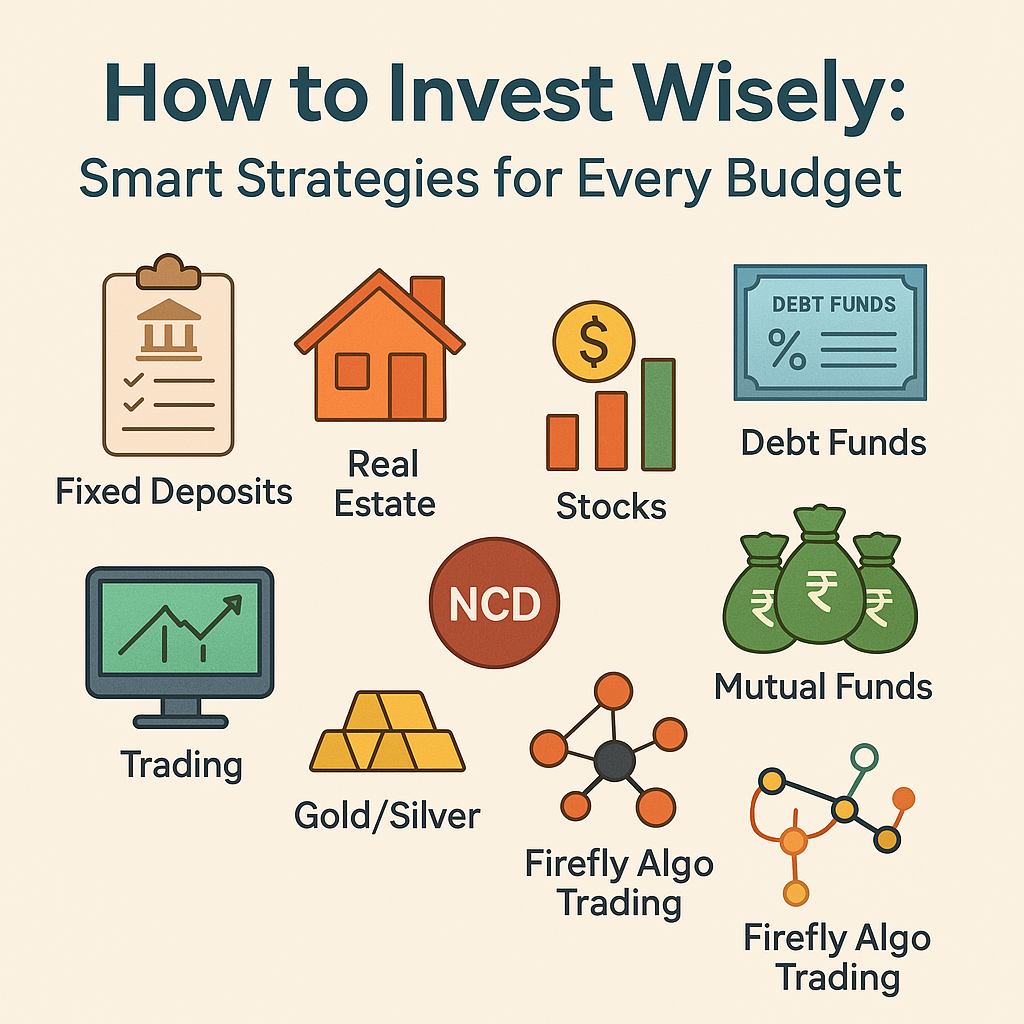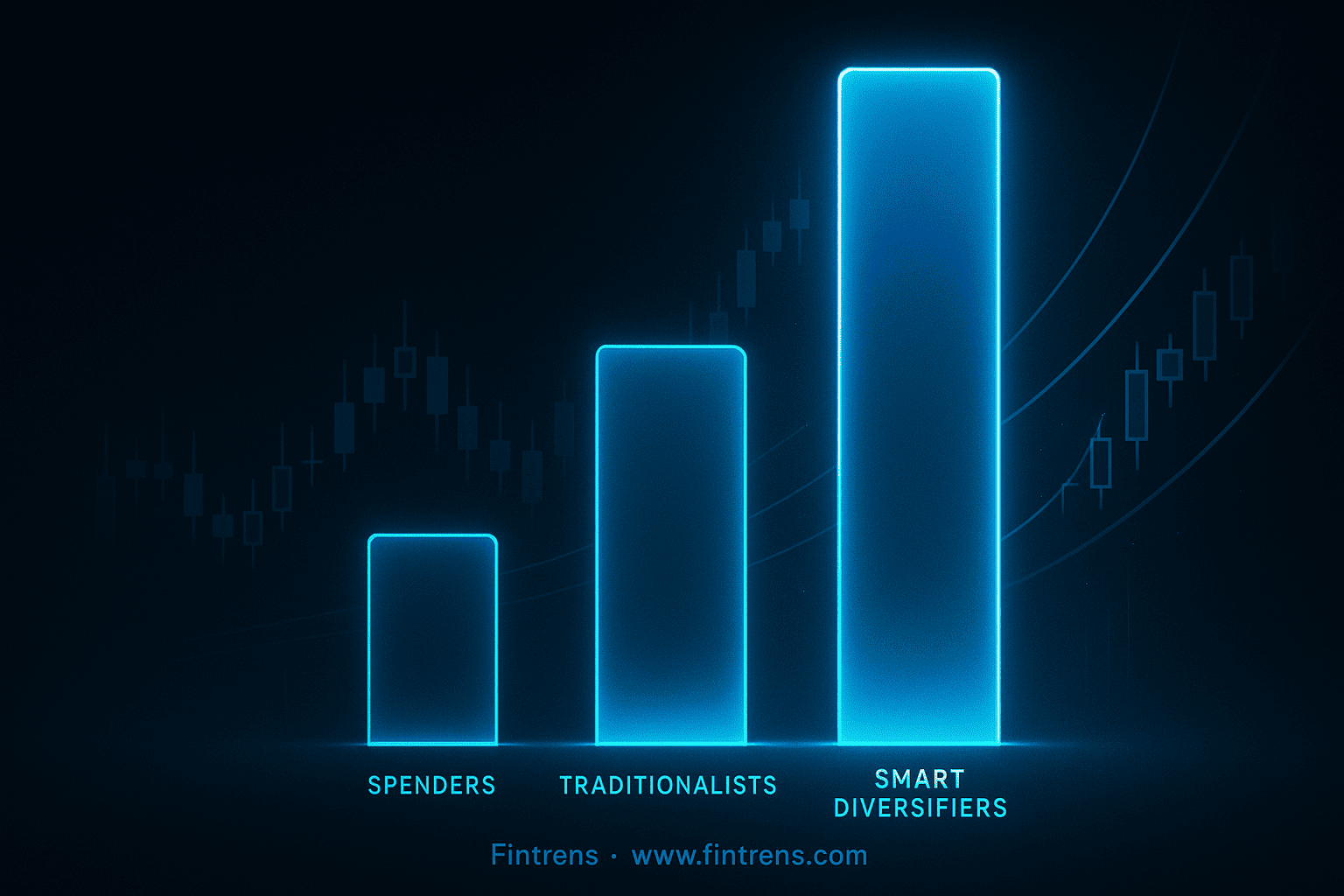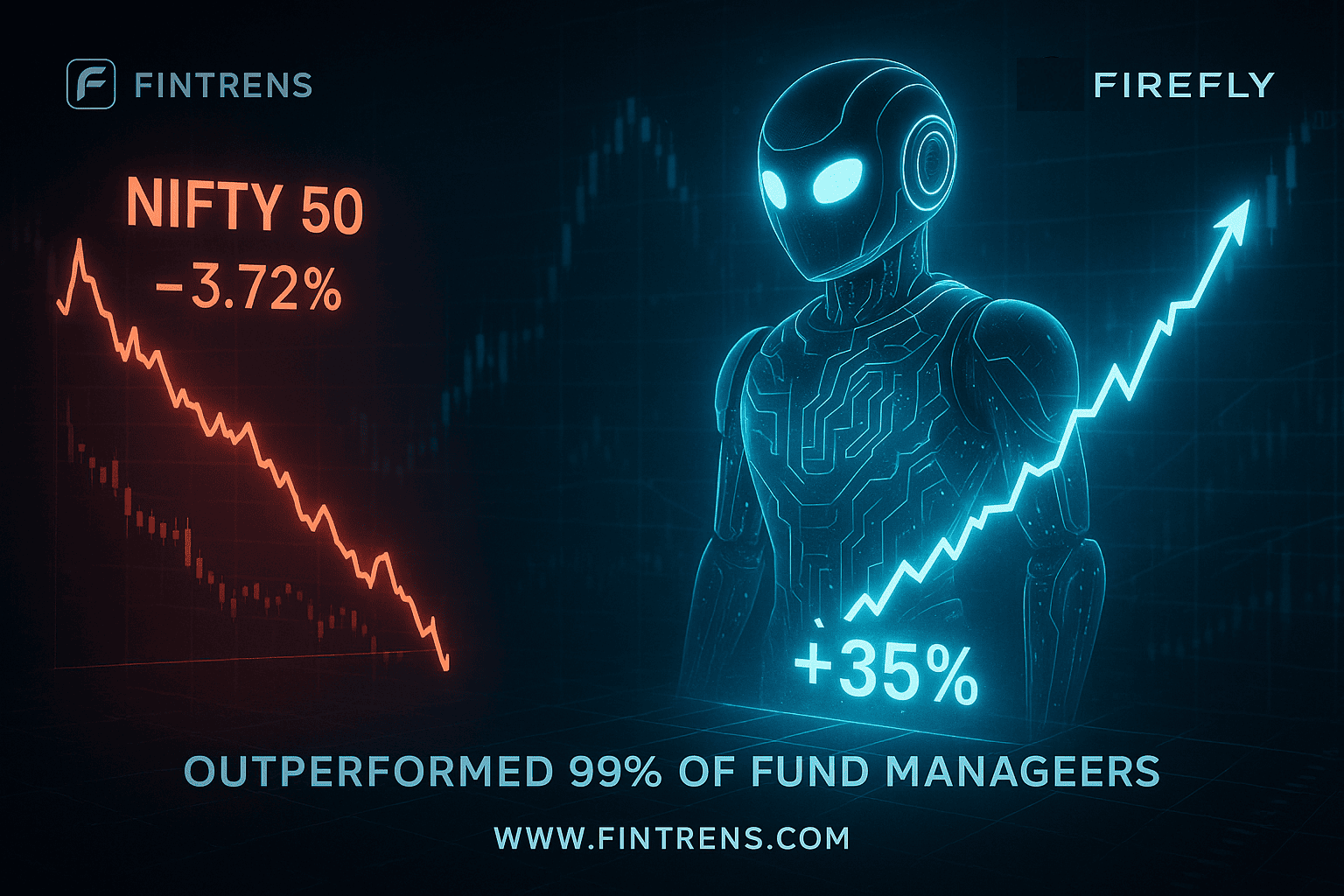How to Invest Wisely: Smart Strategies for Every Budget

Investing isn’t just for the wealthy. Whether you have a small savings pool or a substantial amount, there are multiple investment options to grow your wealth. But with so many choices—fixed deposits, stocks, mutual funds, real estate, and even algorithmic trading—how do you decide where to invest?
The key to wise investing is understanding the pros and cons of each asset class and aligning them with your financial goals. In this article, we’ll explore different investment avenues, from traditional fixed-income options to modern AI-driven trading solutions, and how you can maximise returns even with a modest capital.
1. Fixed Deposits (FD) & Recurring Deposits (RD)
FDs and RDs are one of the oldest and safest investment options, suitable for conservative investors looking for stability.
Pros:
✅ Safe & Secure – Backed by banks and financial institutions, making them a risk-free option.
✅ Highly Liquid – Can be withdrawn early with a penalty, providing financial flexibility.
Cons:
❌ Low Returns – Interest rates are usually lower than inflation, reducing real growth.
❌ Taxation – Interest income is fully taxable, cutting into earnings.
2. Real Estate
Investing in property is a popular way to build wealth over the long term.
Pros:
✅ Stable Asset – A tangible investment with long-term value.
✅ Rental Income – Can provide a passive income stream.
Cons:
❌ Illiquid – Selling property can take time, and market conditions impact prices.
❌ High Initial Capital – Requires significant investment, making it inaccessible to many.
❌ Maintenance Costs – Properties need upkeep, which adds to expenses.
3. Non-Convertible Debentures (NCDs)
NCDs are fixed-income instruments issued by corporations, offering higher returns than traditional deposits.
Pros:
✅ Higher Returns – Generally offer better interest rates than FDs.
Cons:
❌ Credit Risk – Returns depend on the company’s financial health.
❌ Liquidity Issues – May not always have a strong secondary market for trading.
4. Debt Funds
Debt funds invest in fixed-income securities like government and corporate bonds.
Pros:
✅ Diversification – Spreads risk across multiple bonds.
✅ Tax Benefits – Offers indexation benefits on long-term capital gains.
Cons:
❌ Interest Rate Risk – Returns fluctuate based on market interest rates.
❌ Credit Risk – Possibility of bond issuers defaulting.
5. Gold & Silver
Precious metals are a traditional hedge against inflation and economic instability.
Pros:
✅ Inflation Hedge – Retains value even in economic downturns.
✅ Highly Liquid – Can be easily bought or sold.
Cons:
❌ No Passive Income – Unlike stocks or real estate, it doesn’t generate earnings.
❌ Storage Costs – Physical gold and silver require secure storage.
6. Stock Investments
Stocks offer the potential for high returns but come with market volatility.
Pros:
✅ Wealth Creation – Historically, stocks provide superior long-term returns.
✅ Dividend Income – Some stocks pay regular dividends, creating passive income.
Cons:
❌ High Risk – Market fluctuations can result in significant losses.
❌ Requires Knowledge – Successful investing demands research and market understanding.
7. Mutual Funds
Mutual funds pool money from investors to invest in diversified portfolios.
Pros:
✅ Diversification – Reduces risk by investing in multiple assets.
✅ Professional Management – Managed by experts who handle asset allocation.
Cons:
❌ Management Fees – Expense ratios reduce overall returns.
❌ Market Volatility – Performance depends on market conditions.
8. Trading
Active trading involves buying and selling stocks, commodities, or currencies for short-term gains.
Pros:
✅ Potential for Quick Profits – Short-term trades can be highly rewarding.
Cons:
❌ High Risk – Market fluctuations can lead to heavy losses.
❌ Time-Consuming & Stressful – Requires continuous monitoring and market knowledge.
9. Firefly Algorithmic Trading
For those looking to automate their investments, Firefly offers a smart trading solution that minimizes the challenges of traditional trading.
Why Firefly?
🚀 Automated Trading – Eliminates the need for daily market tracking.
🚀 Leverages Existing Investments – Allows pledging of stocks and mutual funds for additional returns.
🚀 Superior Performance – Over the past two years, Firefly generated an additional 35% net return on top of fixed investments.
Example:
If you have ₹1 crore in mutual funds yielding 13% returns annually, Firefly’s AI-driven strategies could generate an additional 35% return, leading to:
- Mutual Fund Return: ₹13 lakh (13% of ₹1 crore)
- Firefly Additional Return: ₹35 lakh (35% of ₹1 crore)
- Total Returns: ₹48 lakh in one year
🔥 That’s nearly 3.7X the return of a regular mutual fund investment!
Disclaimer: Investment in the stock market is subject to risks. Firefly does not guarantee returns, and investors should consider market risks before investing. Taxes on investment gains should be accounted separately.
10. Other Investment Options
Exchange-Traded Funds (ETFs)
A hybrid between stocks and mutual funds, ETFs allow investors to trade diversified funds on the stock exchange.
Pros:
✅ Low Expense Ratios
✅ Diversification with Market Flexibility
Cons:
❌ Market Risk Like Stocks
❌ No Active Fund Management
Public Provident Fund (PPF)
A government-backed savings scheme ideal for long-term investment and tax benefits.
Pros:
✅ Safe and Fixed Returns
✅ Tax-Free Growth & Maturity
Cons:
❌ Long Lock-in Period (15 years)
❌ Returns Lower Than Equity Investments
Sovereign Gold Bonds (SGBs)
A secure way to invest in gold without storage concerns.
Pros:
✅ Pays Interest (Around 2.5% Annually)
✅ No Capital Gains Tax if Held Until Maturity
Cons:
❌ Lock-in Period of 5 Years
❌ Returns Depend on Gold Prices
Provident Fund (PF) & Voluntary Provident Fund (VPF)
A retirement savings option for salaried employees with employer contributions.
Pros:
✅ Stable Growth & Retirement Security
✅ Tax-Free Interest (Up to a Limit)
Cons:
❌ Limited Liquidity Before Retirement
❌ Fixed Returns with No Market Upside
Conclusion: Building a Balanced Investment Portfolio
The best investment strategy depends on your financial goals, risk appetite, and investment horizon. A well-balanced portfolio could include a mix of:
📌 Fixed-income assets (FDs, Debt Funds, PF) for stability.
📌 Growth-oriented investments (Stocks, Mutual Funds, ETFs, Real Estate) for higher returns.
📌 Alternative investments (Gold, SGBs, Firefly Algo Trading) for diversification.
By understanding the risks and rewards of each asset class, you can invest wisely and build wealth over time—even with a modest capital.
🚀 Start your investment journey today and let your money work for you! 🚀
www.fintrens.com




